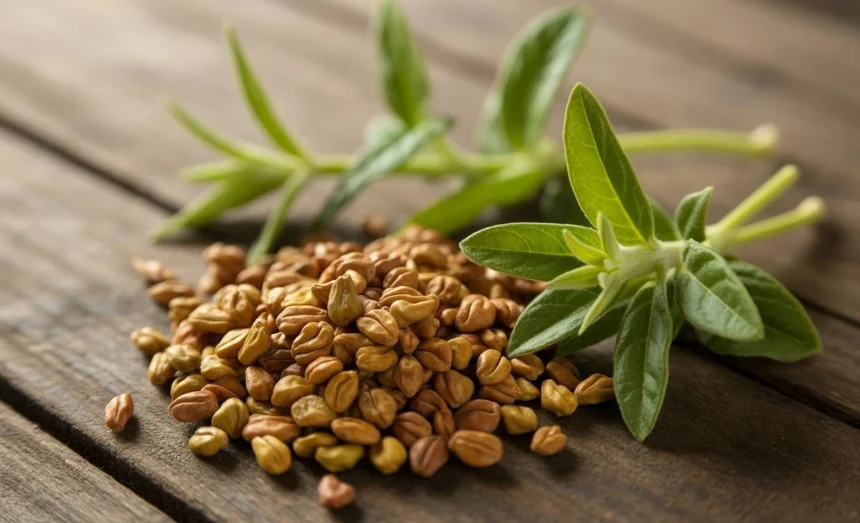In the world of natural medicine, few herbs have a history as rich and respected as Foenegriek, better known in English as fenugreek. For centuries, this humble plant has been treasured for its powerful healing abilities, distinctive flavor, and nutritional value. From ancient Egypt and India to modern Europe, it has stood the test of time — proving that nature’s remedies often hold the key to human well-being.
Today, as people turn back to herbal solutions for health and wellness, it is once again in the spotlight. Whether consumed as a spice, supplement, or tea, it offers a natural way to support digestion, improve metabolism, and even balance hormones. This article explores the history, uses, and scientifically supported benefits of Foenegriek, and why it remains one of the most valuable herbs for modern living.
What Is Foenegriek?
Foenegriek (Trigonella foenum-graecum) is a plant belonging to the legume family, native to parts of Asia and the Mediterranean. Its small, golden-brown seeds are the most commonly used part, though its leaves are also edible and nutritious.
The herb has a slightly bitter, nutty flavor, making it a popular ingredient in traditional dishes across India, the Middle East, and North Africa. However, beyond its culinary appeal, it has been used in traditional medicine for thousands of years to treat a range of ailments — from digestive issues to fatigue and inflammation.
Modern research now confirms many of these benefits, proving that this ancient remedy truly deserves its reputation as a “miracle herb.”
Historical Significance of Foenegriek
The history of Foenegriek dates back more than 4,000 years. Archaeological records show that the ancient Egyptians used it as part of their embalming process and in herbal medicine to reduce fevers. In ancient Greece and Rome, it was used as a healing poultice for wounds and as a tonic for physical strength.
In South Asia, particularly in Ayurvedic and Unani medicine, it became known as a balancing herb — one that could aid digestion, increase vitality, and enhance women’s health. Over time, it spread across Europe and the Middle East, where it continues to be valued both as a food and a natural remedy.
Nutritional Profile of Foenegriek
One of the main reasons it is so effective lies in its impressive nutritional composition. It’s not just a spice — it’s a superfood packed with essential nutrients that promote health and vitality.
Nutrients found in Foenegriek seeds include:
- Protein: Essential for muscle repair and energy production.
- Fiber: Supports digestion and helps control blood sugar levels.
- Iron: Vital for red blood cell production and oxygen transport.
- Magnesium and Manganese: Important for bone health and metabolism.
- Vitamins A, B6, and C: Strengthen immunity and promote skin health.
- Phytonutrients (like saponins and alkaloids): Provide antioxidant and anti-inflammatory effects.
These nutrients make Foenegriek a valuable addition to any diet, particularly for people seeking natural ways to boost energy and manage common health concerns.
Top Health Benefits of Foenegriek
Foenegriek’s popularity in both traditional and modern wellness circles comes from its wide range of potential health benefits. Scientific studies have begun to validate many of its long-known uses, making it a trusted herb for those looking to improve health naturally.
1. Supports Healthy Digestion
It is rich in soluble fiber, which helps ease constipation and promote regular bowel movements. It also acts as a natural digestive tonic, soothing stomach inflammation and improving nutrient absorption.
2. Helps Control Blood Sugar Levels
Research shows that Foenegriek can lower blood sugar and improve insulin sensitivity. This makes it particularly beneficial for individuals with diabetes or insulin resistance.
3. Promotes Heart Health
Regular consumption of Foenegriek may help lower cholesterol levels, reduce inflammation in blood vessels, and support overall cardiovascular function.
4. Enhances Hormonal Balance
In women, it is known to naturally support hormonal health, especially during menstrual cycles and menopause. Its phytoestrogen compounds mimic the effects of estrogen in the body, offering relief from common symptoms such as fatigue and mood swings.
5. Boosts Energy and Metabolism
With its rich iron and vitamin content, Foenegriek enhances stamina and supports metabolism — making it an ideal supplement for those feeling tired or sluggish.
Foenegriek in Daily Life
It isn’t just a medicinal herb — it’s also a flavorful addition to everyday cooking. Its seeds, powder, and leaves are used in various forms across cuisines.
Here’s how people commonly include it in their routines:
- In Cooking: Ground seeds are added to curries, stews, and bread for a rich, earthy flavor.
- As Tea: Foenegriek tea helps detoxify the body and improve digestion.
- In Supplements: Capsules or powders offer a concentrated dose of its beneficial compounds.
- For Skin & Hair: Mixed with oils, it promotes healthy hair growth and glowing skin.
Whether consumed or applied externally, the herb’s versatility makes it a practical part of natural wellness.
Real-World Example: Traditional Use Meets Modern Science
In recent years, Foenegriek has gained attention in scientific research for its effectiveness in managing type 2 diabetes. One notable study conducted in India found that daily consumption of Foenegriek seeds significantly improved blood glucose control and reduced cholesterol in diabetic patients.
Similarly, nutritionists across Europe and the Middle East have begun recommending Foenegriek supplements as part of balanced diets, especially for people seeking natural alternatives to chemical-based treatments. This blend of tradition and modern validation highlights the herb’s enduring relevance.
How to Use Foenegriek Safely
While Foenegriek is natural, it should be used in moderation. Overconsumption can cause mild side effects such as bloating or digestive discomfort.
Tips for safe use:
- Start with small doses (½ teaspoon of seeds or powder daily).
- Drink plenty of water when consuming Foenegriek for digestion.
- Pregnant women should consult a doctor before using supplements.
- For external use, always test for skin sensitivity first.
When used responsibly, Foenegriek is both safe and beneficial for long-term health.
Foenegriek’s Role in Modern Nutrition
As more people turn toward plant-based diets and holistic wellness, Foenegriek has become a staple ingredient in natural supplements and health products. From protein shakes to organic teas, manufacturers use it for its nutritional density and therapeutic qualities.
Its growing demand also supports sustainable farming communities in countries like India, Egypt, and Ethiopia — showing how ancient wisdom continues to sustain modern health and livelihoods.
Conclusion
It is more than a spice — it’s a bridge between ancient tradition and modern wellness. For centuries, it has been trusted to heal, energize, and restore balance to the human body.
In today’s fast-paced, stress-filled world, it offers something simple yet powerful: natural nourishment. Whether you’re seeking better digestion, stable energy, or hormonal harmony, this golden herb delivers holistic support.
By bringing Foenegriek into your diet or wellness routine, you’re not just following a trend — you’re continuing a legacy of healing that has lasted thousands of years.







